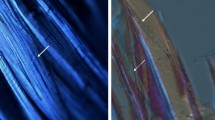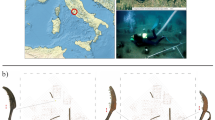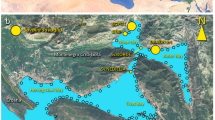Abstract
AT the beginning of June 1926 a quantity of wood heavily infected with Teredo (probably all Teredo norvegica), taken from the experimental rafts moored near the Plymouth breakwater, was placed in one of the tanks in the Plymouth laboratory. It was left undisturbed for almost four months, and when examined at the end of September was found covered with fæcal deposits consisting of wood fragments cut away by the shell valves of Teredo and passed out by way of the exhalent siphons. These deposits were, on the average, rather less than half an inch thick, and when they were washed away there were revealed, projecting from the wood, great numbers of fine calcareous tubes, which on closer examination proved to occur always in pairs and to project from the openings of the burrows formed by the shipworms. Plainly the tubes had been formed around the siphons of the Teredo. They were of varying length, depending presumably on the thickness of the deposits, the longest being some two-fifths of an inch. The general appearance of the wood is shown in Fig. I.
This is a preview of subscription content, access via your institution
Access options
Subscribe to this journal
Receive 51 print issues and online access
$199.00 per year
only $3.90 per issue
Buy this article
- Purchase on Springer Link
- Instant access to full article PDF
Prices may be subject to local taxes which are calculated during checkout
Similar content being viewed by others
Author information
Authors and Affiliations
Rights and permissions
About this article
Cite this article
YONGE, C. Formation of Calcareous Tubes round the Siphons of Teredo. Nature 119, 11–12 (1927). https://doi.org/10.1038/119011b0
Issue Date:
DOI: https://doi.org/10.1038/119011b0
Comments
By submitting a comment you agree to abide by our Terms and Community Guidelines. If you find something abusive or that does not comply with our terms or guidelines please flag it as inappropriate.



